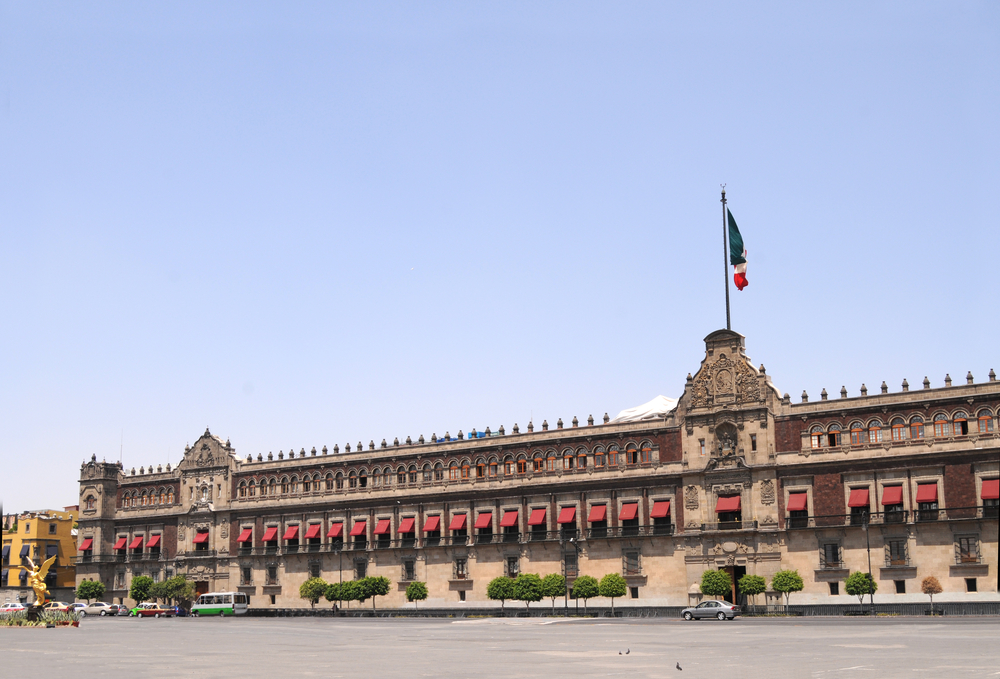Government Overview
Country
Local Long Form: Estados Unidos Mexicanos
Local Short Form: Mexico
Etymology: Named after the capital city, whose name stems from the Mexica, the largest and most powerful branch of the Aztecs; the meaning of the name is uncertain
Capital
Mexico City: Named after the Mexica, the largest and most powerful branch of the Aztecs.
Geographic coordinates: 19 26 N, 99 08 W
Time Difference: UTC-6 (1 hour behind Washington, DC, during Standard Time)
Daylight Savings: +1hr, begins first Sunday in April, ends last Sunday in October.
Independence
Date: 16 September 1810 (declared independence from Spain), 27 September 1821 (recognized by Spain)
Constitution
History: Several previous; latest approved 5 February 1917.
Amendments: Proposed by the Congress of the Union. Passage requires approval by at least two-thirds of the members present and approval by a majority of the state legislatures. Amended many times; last in 2019 (2019).
Legal System
Civil law system with US constitutional law influence, judicial review of legislative acts
Citizenship
Citizen By Birth: Yes
Citizen By Descent: Yes
Dual Citizenship Recognized: Not specified
Residency requirement for Naturalization: Five years
Suffrage
Suffrage: 18 years of age, universal and compulsory
Executive Branch
Chief of State: President
Head of Government: President
Cabinet: Cabinet appointed by the president
Description: At the head of the executive branch is the president: head of state and head of government, commander-in-chief of the armed forces, empowered by the constitution to appoint a Cabinet and fill senior executive posts, execute and enforce federal law, conduct foreign policy and conclude international treaties, issue pardons, establish maritime and border customs, and numerous other powers. The president is directly elected by simple majority popular vote, and is limited to a single six-year term.
Legislative Branch
Description: Lawmaking authority is vested in the bicameral National Congress (Congreso de la Union), which is composed of the Senate (Camara de Senadores) and the Chamber of Deputies (Camara de Diputados). The Senate contains 128 seats, with 96 members directly elected in multi-seat constituencies by simple majority vote and 32 directly elected in a single, nationwide constituency by proportional representation vote. Senators serve six-year terms. The Chamber of Deputies consists of 500 seats, with 300 members directly elected in single-seat constituencies by simple majority vote and 200 directly elected in a single, nationwide constituency by proportional representation vote. Members serve three-year terms.
Judicial Branch
Description: The highest judicial bodies are the Supreme Court of Justice (Suprema Corte de Justicia de la Nacion) and the Electoral Tribunal of the Federal Judiciary. The Supreme Court consists of a chief justice and 11 associate justices and is organized into civil, criminal, administrative, and labor panels. Justices are nominated by the president and approved by two-thirds vote of the members present in the Senate. Justices serve 15-year terms. The Electoral Tribunal of the Federal Judiciary is organized into the superior court, with seven judges including the court president, and five regional courts, each with three judges. Judges are nominated by the Supreme Court and elected by two-thirds vote of members present in the Senate. The superior court president is elected from among the court’s members to hold office for a four-year term. Other judges of the superior and regional courts serve staggered, nine-year terms. Subordinate courts include federal-level circuit, collegiate, and unitary courts, and state- and district-level courts.
Copyright © 1993—2024 World Trade Press. All rights reserved.

 Mexico
Mexico 


